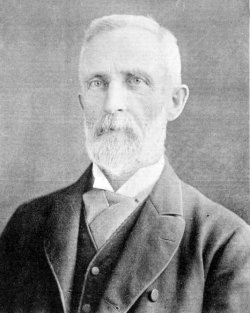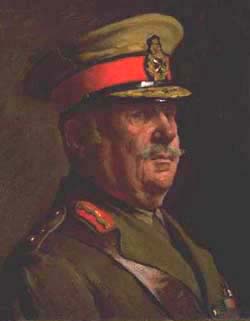 |
|
|
Russo-Turkish Conflict to the Berlin Congress 1877-78: |
|
The Australian colonists followed the Near East crisis with keen interest. As part of the British Empire they depended on the Royal Navy for their protection and security from real or imagined enemies like France and Russia. The possibility of war existed between Great Britain and Russia during the 1870’s -1880’s which was something that would have concerned the Australian colonies from a security point of view. There is no doubt that if an Anglo-Russian had conflict occurred, Australian colonials would have volunteered to fight in the British Imperial Army; Australians volunteered during the Khartoum crisis in 1885. Charles Henry Pearson and Charles Snodgrass Ryan were two Australians who had an indirect and direct interest in the Russo-Turkish war. This article will be divided into four parts. |
|
| A short biography of Pearson and Ryan Charles Henry Pearson (1830-1894) was born on September 7, 1830 in Islington, London. During his life, he worked as a historian, educator, politician and journalist. He was appointed Professor of Modern History at Kings College, London 1855-64 and traveled widely in Europe. Arriving in Melbourne in the early 1870’s, he taught at the University of Melbourne 1873-4 and was allied with the Age newspaper. Pearson was a great believer in promoting secondary and tertiary education. |
 |
| Charles Snodgrass Ryan (1853-1926) was born at Killeen Station, Longwood, Victoria on September 20, 1853 and was educated at Melbourne Church of England Grammar School. He commenced his medical course at the University of Melbourne 1870-72 and completed his studies at the University of Edinburgh in 1875. He furthered his medical studies in Bonn and Vienna. | |
While in Rome, he saw an advertisement in the Times where the Ottoman Government required 20 military surgeons. He saw this as an opportunity to have some adventure and gain medical experience as a surgeon. Returning to London, he was interviewed by the Ottoman Embassy and two days later departed for Constantinople. Ryan served in the last stages of the Turco-Serbian war in the middle of 1876 and spent 4 months at the siege of Plevna in 1877-78. In early 1878, he became a Russian prisoner of war after of the fall of Erzeroum and was decorated by the Sultan for his services as a soldier and surgeon. Ryan returned to Melbourne in June 1878 and was a practicising surgeon at the Royal Melbourne Hospital till 1913. He maintained close relations with Turkey and served some years as its Consul in Melbourne. As fate would have it, he served in the Australian Imperial Force (A.I.F.) against the Turks at Gallipoli in 1915. |
 |
The Pearson lecture On December 18, 1877 Professor Pearson presented a fascinating lecture at Kew Town Hall (Melbourne) on the Russo-Turkish war. Pearson claimed that he had visited the Balkans, northern Turkey and Russia sometime during the late 1850’s. He outlined the history of the Ottoman Empire from the time of the Crimean War till the present conflict. Turkey’s access to the European money market was a retrograde step resulting in a national debt of £200 million from 1854-1874. Moreover the Sultan’s profligacy on new palaces and purchasing an ironclad naval fleet contributed to Turkey defaulting on its loan obligations. During the summer of 1875, Turkish authorities in Bosnia used force to collect taxes from the peasants who resisted and commenced a war. Pearson believed that Russia "[would like]. . . to see Turkey bankrupt and misgoverned … [and] they would . . .[like] to postpone the collapse for 10 years.” On the other hand, a victorious Turkey would become emboldened to demand peace terms that would place the Christian populations of the Balkans in an awkward position. He mentions that the Indian Moslems might be pleased to see the Sultan defeating the Russian Czar. Even if Russia achieved a decisive victory over Turkey, Pearson did not believe that Russia would annex Constantinople. Russia might gain in Europe with Bulgaria being freed from Ottoman rule and demand compensation in Asia. Britain was the only power standing in the way of a Russian occupation of Constantinople. No one really wanted another European war. Pearson concluded that “one result of the war would be the amelioration of the condition of the Christian subjects of the Porte and that the martyred thousands of Bulgarians would prove not to have died in vain.” |
|
|
An Australian Ottoman officer/surgeon
His action worked wonders for the troops under his command who ended up fighting with great skill and determination against the Russians.
There may be some truth in the assertion above that the Russians directly threatened the security of the Australian colonies. The Australian colonies felt isolated and vulnerable as a white British outpost located in the South West Pacific.
|
|
|
(Posting date 22 August 2006) About Stavros T. Stavridis Stavros Terry Stavridis was born in Cairo, Egypt in 1949 of Greek parents. He migrated to Australia with his parents in September 1952. Stavros has a Bachelor of Arts (B.A) in Political Science/Economic History and B.A (Hons) in European History from Deakin University and M.A in Greek/Australian History from RMIT University. His MA thesis is titled "The Greek-Turkish War 1919-23: an Australian Press Perspective." Stavros has nearly 20 years of teaching experience, lecturing at University and TAFE (Technical and Further Education, the equivalent of Community College in the US) levels. He has presented papers at international conferences in Australia and USA and has also given public lectures both in Australia and on the West Coast of the US. Many of his articles have appeared in the Greek-American press. He currently works as a historical researcher at the National Center for Hellenic Studies and Research, Latrobe University, Bundoora, Victoria, Australia. Stavros' research interests are the Asia Minor campaign and disaster, Middle Eastern history, the Assyrian and Armenian genocides, Greece in the Balkan Wars 1912-13 and the First World War and history in general. About Vahe G. Kateb Mr Kateb is the Director of the Armenian Language Program on Special Broadcasting Service (SBS) Radio in Melbourne, Australia. He has completed a Masters dissertation titled "Australian Press Coverage of the Armenian Genocide 1915-1923" at University of Wollongong in 2003. HCS maintains a large selection of fine pieces written by Mr. Stavridis which viewers are invited to view at the URL http://www.helleniccomserve.com/stavridisone.html Read More About the Greeks of Asia Minor HCS readers who enjoyed this article may wish to view others about Smyrna and Asia Minor in our section specially created for these topics at the URL http://www.helleniccomserve.com/smyrnaopener.html. We also maintain a permanent, extensive archives of articles which readers are invited to browse at the URL http://www.helleniccomserve.com/archivesmyrnaasiaminor.html . |
|
|
|
|
2000 © Hellenic Communication Service, L.L.C. All Rights Reserved.
http://www.HellenicComServe.com |
|
